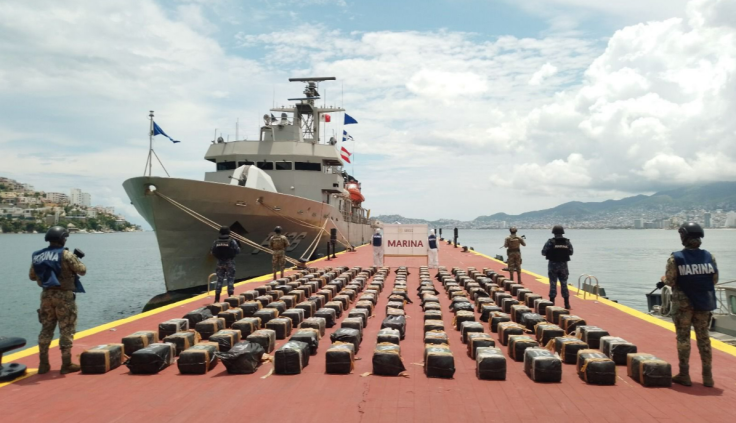
Mexico's Secretary of Security and Citizen Protection, Omar García Harfuch, announced Friday that authorities intercepted a semisubmersible vessel—commonly known as a "narco sub"—off the coast of Guerrero. The vessel, typically used to smuggle large quantities of drugs, was carrying 3.5 tons of cocaine and appeared to be bound for the United States.
García Harfuch said in a social media publication that three foreign nationals were arrested during the operation, which was led by the Mexican Navy.
"The Navy seized a semisubmersible off the coast of Guerrero that was carrying more than 3.5 tons of cocaine; three foreign nationals were also arrested," he wrote.
La Secretaria de Marina @SEMAR_mx aseguró un semisumergible en las costas de Guerrero que transportaba más de 3 y media toneladas de cocaína, además fueron detenidas tres personas extranjeras.
— Omar H Garcia Harfuch (@OHarfuch) June 27, 2025
Este aseguramiento representa una afectación económica a la delincuencia organizada… pic.twitter.com/4tbLkKODgG
Authorities recovered 180 packages of cocaine with an estimated value of nearly $45 million. The cargo, vessel and detainees were turned over to Mexico's Attorney General's Office for legal proceedings and investigation, according to Infobae México.
"This seizure represents a financial blow to organized crime of more than 800 million pesos and adds to the 44.8 tons of cocaine seized at sea during the current administration," García Harfuch said. He added that the seizure prevented more than 7 million doses of cocaine from reaching the streets.
How "narco subs" work
Despite the nickname, "narco subs" are not true submarines. Known as low-profile vessels (LPVs), they cannot fully submerge. Instead, they ride low in the water to avoid detection.
The vessels are typically constructed from wood and fiberglass, materials that are hard to detect via radar. They are also painted in order to blend in with the ocean.
According to a 2022 report by Colombia's International Center for Research and Analysis Against Maritime Drug Trafficking (CIMCON), these vessels cost roughly $150,000 to build and are usually constructed in remote, clandestine shipyards along Colombia's Pacific coast.
A near-record number of LPVs were intercepted across the Atlantic and Pacific oceans in 2024, according to InSight Crime.
While most narco subs are stopped in South and Central America, many reach Mexican waters. Intelligence from Mexico's Security Cabinet shows the Navy has seized more than 111 tons of cocaine and 223 illicit maritime vessels between 2023 and 2025, according to N+ Noticias.
In one notable case last October, Mexican forces carried out five operations that resulted in the capture of six low-profile vessels transporting more than eight tons of drugs.
© 2025 Latin Times. All rights reserved. Do not reproduce without permission.







